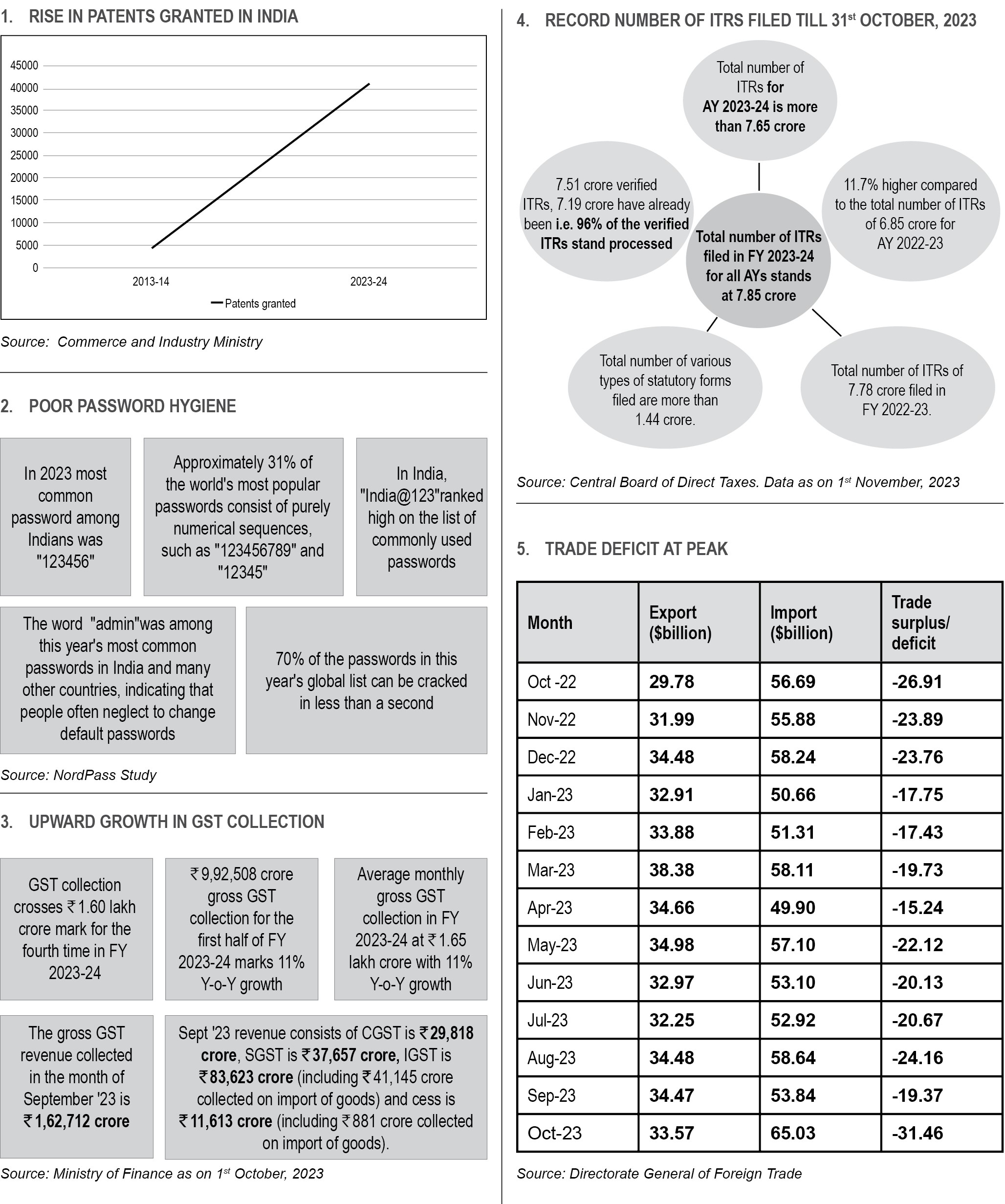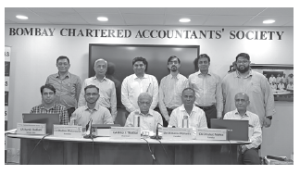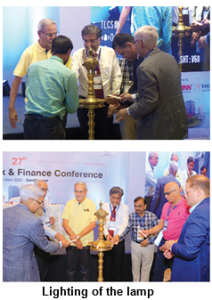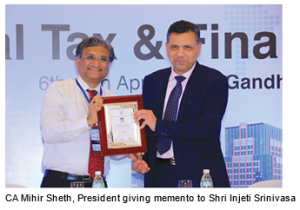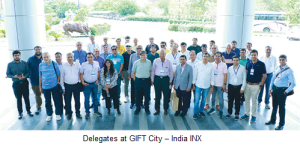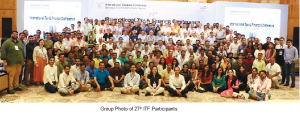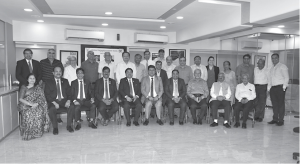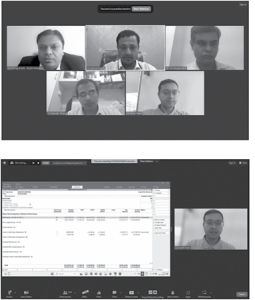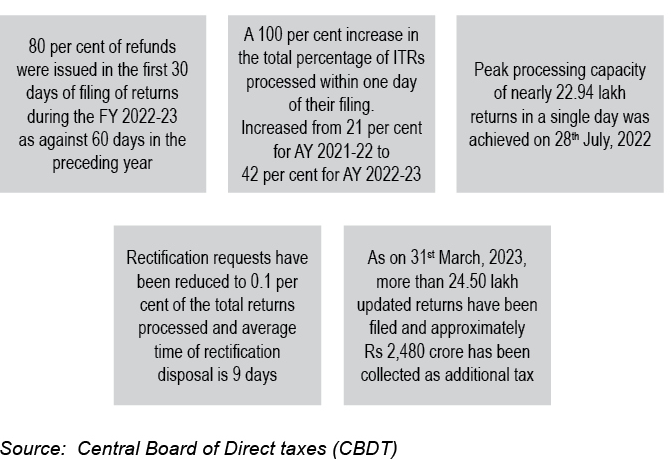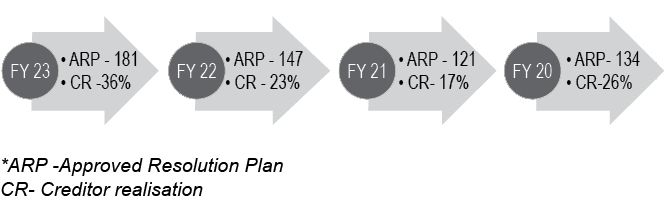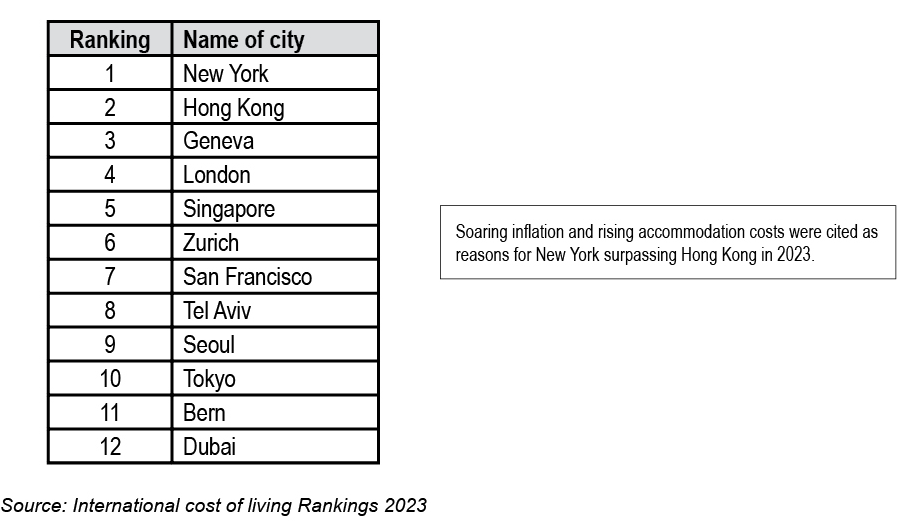AMENDMENT IN ACTS
The Goods and Services Tax Council (GST Council) in its 50th and 51st meetings considered representation from various associations on the issues regarding the taxability of Casinos, Horse Racing and Online Gaming and recommended making certain amendments in the Central Goods and Services Tax Act, 2017 (the Act) to provide clarity regarding taxability of Casinos, Horse Racing and Online Gaming. Accordingly, CGST Amendment Act and IGST Amendment Act, both dated 18th August, 2023 are passed and notified in Gazette.
B. NOTIFICATIONS
1. Notification No. 39/2023 — Central Tax dated 17th August, 2023
By the above notification, the Amendment is made in Notification No. 2/2017 dated 19th August, 2017 by which some entries are substituted which are regarding territorial jurisdictions.
2. Notification No. 40/2023 — Central Tax dated 17th August, 2023
The above notification seeks to appoint common adjudicating authority in respect of show cause notices issued to M/s United Spirits Limited.
3. Notification No. 41, 42, 43 & 44/2023 — Central Tax dated 25th August, 2023
By the above notifications, the extension of time is granted for furnishing of Form GSTR-1, return in Form GSTR 3B (monthly/ quarterly) and GSTR -7 respectively for taxpayers registered in Manipur. The extension is up to 25th August, 2023 for all the above returns.
4. Notification No.45/2023 — Central Tax dated 6th September, 2023
By the above notification, the CGST Rules are amended. These amendments are in relation to valuation for online gaming including online money gaming and actionable claims in the case of Casinos. For this purpose, Rules 31B & 31C have been inserted.
C. ADVISORY
a) The information is given by GST: The Advisory is about “Mera Bill Mera Adhikaar Scheme” dated 24th August, 2023.
b) The GSTN has further informed about introducing “Electronic Credit reversal and Re-claimed statement” dated 31st August, 2023.
D. ADVANCE RULINGS
34. Exemption vis-à-vis Agreement with NSDC
Nxtwave Disruptive Technologies Pvt Ltd (Order No.: A.R. Com/12/2022 dated 27th September, 2022 (TSAAR Order No. 50/2022) (Telangana)
M/s Nxtwave Disruptive Technologies Private Limited has filed this application (name referred to as Nxtwave).
Nxtwave was founded by IIT Bombay, IIT Kharagpur and IIT Hyderabad alumni — Sashank Reddy Gujjula, Anupam Pedarla and Rahul Attuluri. The Nxtwave offers training programs in Industry 4.0 Technologies for college students, graduates, and early professionals.
The Nxtwave aims to empower 150 million college students and recent graduates, between the age groups of 18-24, into highly-skilled professionals to gear up for the 4.0 revolution.
National Skill Development Corporation (“NSDC”), a Section 25 Company under Companies Act, 1956 (corresponding to section 8 of the Companies Act, 2013), was initially set up under the Prime Minister’s National Council on Skill Development with the primary mandate of enhancing and supporting private sector initiatives for Skill Development in India through appropriate Public-Private Partnership (“PPP”) models and striving for significant operational and financial involvement from the private sector. At present, NSDC functions under the aegis of the Ministry of Skill Development & Entrepreneurship (“MSDE”).
NSDC through this Scheme endeavors to create a sustainable and enabling skill training ecosystem by promoting the provision of market-led fee-based Services under the various models like:
(i) self-financed by the candidate,
(ii) financed by the candidate or partner through a loan or under an income sharing arrangements with the partner etc.
Any Eligible Entity having relevant experience in Skill Development can submit a Proposal to become a Partner of NSDC. The Proposal shall be in the prescribed format and shall include details of the services proposed to be offered by the Partner under the Scheme.
Both the Nxtwave and NSDC have entered into an agreement dated 9th June, 2022 to further their objectives, and the Nxtwave has been recognized as a “Training Partner” of the NSDC with effect from 9th June, 2022.
As per the agreement, Nxtwave shall offer its training programs, as detailed in the proposal approved by the NSDC, as amended from time to time with the approval of NSDC.
The scheme extends mutual benefits to all stakeholders, like NSDC, Nxtwave as well as students.
With the above background, following questions were raised before AAR:
“Q1: Whether training programmes offered by the applicant, as approved by NSDC would be construed under the “any other scheme implemented by the NSDC” as required under Serial No. 69 of the Notification and the benefit of GST exemption would be available to the applicant from the date of its agreement with NSDC?
Q2: Whether the training programmes offered in collaboration with other business partners, imparted by business partners of the applicant under a subcontract would be construed under the “any other scheme implemented by the NSDC” as required under Serial No. 69 of the Notification and the benefit of GST exemption would be available to the applicant?
Q3: Exemption of GST is available to the company as a whole as long as its services fulfill the criteria laid down under serial no.69 of the said notification and not limited to Telangana GST?”
Applicant justified its claim of exemption raised in questions, on the ground that Applicant is rendering education and training services under the following models:
CCBP Intensive:
CCBP Intensive enables tech job aspirants (college graduates and early professionals) to get a software job. The details of the program can be referred to on the company website (www.ccbp.in).
CCBP Academy:
CCBP Academy enables college students from engineering & technology colleges to become industry-ready by the time of their graduation and achieve high-paid software jobs.
It was submitted that the above services are covered within the HSN 9992.
It was also submitted that the applicant is an approved training partner of the NSDC and that the project under implementation is already approved by the NSDC and an agreement is executed between parties.
Therefore, a claim was made that the activity is exempt under Entry No. 69 in Notification No. 12/2017 — Central Tax (Rate) issued by the Ministry of Finance dated 28th June, 2017.
The second question was also justified to be exempt as the subcontract is made simply for the furtherance of the objectives of the scheme and is on a principal to principal basis.
Regarding question 3, it was submitted that the exemption of GST shall be available to the company as a whole and not just under the Telangana GST Act.
The ld. AAR made a reference to Entry 69 of Notification No. 12/2017 which provides an exemption to,
“Any services provided by, —
(a) ………….
(b) ………….
(c) ………….
(d) A training partner approved by the National Skill Development Corporation or the Sector Skill Council, in relation to —
(i) The National Skill Development Programme implemented by the National Skill Development Corporation; or
(ii) A vocational skill development course under the National Skill Certification and Monetary Reward Scheme; or
(iii) Any other Scheme implemented by the National Skill Development Corporation.”
The ld. AAR made detailed reference to the object of NSDC and the scheme of exemption granted in Entry 69. The ld. AAR observed that for Entry 69 the service provider has to be a training partner approved by the National Skill Development Corporation or the Sector Skill Council. The applicant has submitted the attested photocopy of the certificate of Partnership which shows that the applicant is the Approved Training Partner of the National Skill Development Corporation (NSDC) from 23rd June, 2022, up to 22nd June, 2023. Therefore, the ld. AAR held that the applicant is presently an Approved Training Partner of NSDC.
The ld. AAR noted further requirements, whether the application is providing any services in relation to any other Scheme implemented by the National Skill Development Corporation. In this context, the ld. AAR found that the applicant is providing courses in relation to the Scheme for market-led fee-based services by the National Skill Development Corporation.
The ld. AAR also found that the applicant has entered into agreement with NSDC dated 23rd June, 2022 which substantiates a partnership with NSDC for executing training under the above scheme for market-led fee-based services under non-funded affiliation.
The ld. AAR also found that the applicant is offering training programs, as detailed in the proposal approved by the NSDC as amended from time to time with the approval of NSDC, mentioned above, like CCBP.
The ld. AAR concluded that the services provided by the applicant are as the training partner approved by the National Skill Development Corporation and are in relation to the Scheme implemented by the National Skill Development Corporation.
Accordingly, the ld. AAR held that the services offered by the applicant fall under Sl. No. 69 (d) (iii) and therefore eligible for exemption under Notification No. 12/2017 for CGST and SGST.
So far as the second question is concerned, the ld. AAR observed that as per Entry 69, the services supplied by the applicant as an approved training partner of NSDC in relation to any other scheme implemented by the NSDC are exempt but not the services received by the applicant from others including a sub-contractor who supplies such services to the applicant, as he is not a training partner approved by the National Skill Development Corporation or the Sector Skill Council. Therefore, the ld. AAR answered question (2) in negative.
Accordingly, the first issue is decided in the favour of the applicant holding the activity as exempt. However, in relation to question (2), the AAR ruled in negative.
In respect of question (3), the learned AAR held that the only services covered by Entry 69 are exempt and not others.
35. Nature of Contract for operation and maintenance of Dam Work
Secure Meter Ltd. (AR No. RAJ/AAR/2022-23 dated 12th October, 2022 (Raj.)
The applicant i.e., M/s Secure Meter Limited, E-Class, Pratap Nagar Industrial Area, Udaipur is engaged in providing compressive water services and currently is in the process of bidding for a tender floated by the PHED, a unit of the Government of Rajasthan for the Operation and Maintenance of the Mansi Wakal Dam Stage-I.
The applicant has explained various aspects of the contract.
The applicant has raised the following questions:
“1. Whether the activity of operation and maintenance is to be considered as Supply of goods or a Supply of Services under CGST / RGST Act 2017? Accordingly, whether the transaction can be sub-classified as a “Pure Supply of Service” or “Pure Supply of Goods” or “Composite supply of goods and services being a works contract?
2. Whether the applicant is entitled to the benefit of exemption under Entry 3 A of Notification No. 12/2017 — Central Tax (Rate) dated 28th June, 2017, as amended? If not, what is the applicable rate of tax?”
Based on the written submission made by the applicant and given details, the ld. AAR found that applicant is in the process of bidding for a tender floated by the PHED, a unit of the Government of Rajasthan for the Operation and Maintenance of the Mansi Wakal Dam Stage-I complete system, including mechanical, electrical, instrumentation installation works, switchyards / GSS and maintenance of Dam, pumping machinery, pipe line & tunnel from Mansi Wakal Dam to Nandeshwar filter plant project on ESCO and O&M contract. The terms and scope of the contract combines ESCO Model and O&M contract.
Based on the scope of work as detailed in contract / Tender Document NIT No. 03 / 2021-22, the ld. AAR observed that the ESCO model requires improvement of the whole water supply system involving pump houses, pumping stations, transmission lines, switchyards, and headwork. Re-modelling of pump foundation and extension of pump house, replacement of fittings / fixtures and painting of all permanent structures like pumping station building, Dam, Tunnel etc. are involved in the contract. It was further observed that a single tender shall be floated for Operation and Maintenance of Dam, pumping machinery, pipeline & tunnel on ESCO Cum O&M Contract where the preamble of scope specifies that the contract combines ESCO model and O&M work. It was observed that the activities under the ESCO model and the O&M contract are closely linked.
The ld. AAR referred to the meaning of works contract, Composite Supply and meaning of immovable property. Based on facts that the main intention is to supply maintenance services, the ld. AAR observed that the activity also involves the use of materials. It was also observed that all the components of the pumping system are erected at the prescribed location and permanently attached to the earth and they cannot be dismantled and reassembled, as such dismantling may cause substantial damage to the system and its components. Therefore, the activities to be undertaken by the applicant with respect to Operation and Maintenance are for an immovable property i.e., Mansi Wakal Dam and the given work is works contract, held by the ld. AAR. Accordingly, it was also held that all the conditions of composite supply are satisfied, therefore it is a composite supply of works contract. It was also observed that as per the break-up of material cost under the Operation & Maintenance of Mansi Wakal water project provided by the applicant, the value of supply of goods is 11.50 per cent i.e., below 25 per cent out of the total value of supply and hence, the applicant is eligible for exemption under Entry No. 3A of Notification No. 12 / 2017-CT (R) dated 28th June, 2017.
The ld. AAR gave the ruling as under:
“The activity of O & M of Mansi Wakal Dam Project on ESCO Model and O & M work by the applicant is to be undertaken /being undertaken for a Government Department. In this activity of Composite supply of goods and services, the applicability of GST will be as under:
(a) Composite supply of goods and services where supply of goods is below 25 per cent out of the total value of supply then GST will be @ NIL.
(b) Composite supply of goods and services where the supply of goods is more than 25 per cent of the total value of supply then GST will be @12 per cent (SGST 6 per cent + CGST 6 per cent).”
36. Classification — Satin Rolls, Taffeta Rolls
Mean Light Co. (AR No. KAR/ADRG-43/2022 dated 29th November, 2022 (KAR)
The applicant has raised questions about the “classification of products “Satin Rolls” and “Taffeta Rolls” with sizes between 19 mm to 40 mm.
The brief facts about the products are narrated as under:
“Satin Rolls: Made with 100 per cent polyester, the rolls are available having a width between 10 mm to 810 mm. We mainly deal with sizes between 19 mm to 40 mm. The same will be sold to printers for printing purposes. The ultimate customers of the products are the companies engaged in manufacturing of readymade garments. The products will be ultimately used for the purposes of printing wash care instructions & fabric contents (to capture instructions).
Taffeta Rolls: Made with 100 per cent Nylon and dip quoted sizes available in the market from 10 mm to 810 mm. We mainly deal with sizes between 19 mm to 40 mm. The same will be sold to printers for printing purposes. The ultimate customers of the products are the companies engaged in manufacturing of readymade garments. The products will be ultimately used for the purposes of printing wash care instructions & fabric contents (to capture instructions).”
Applicant further supplied the following information:
“11.1 Taffeta Rolls: The standard manufacturing size of the fabric is 60 inches / 1524 mm wide fabric, made up of polyester yarn. Acrylic coating is made on the fabric for better printing quality and also to protect from raveling or fraying, then will be cut in different sizes and shapes as normal scissor cut.
11.2 Polyester Satin Ribbons: The fabric is made from polyester yarn, standard manufacturing size is 60 inches / 1524 mm wide. Either optical or non-optical coating is made on the fabric for brightening and to remove impurities. Optical brighter coating will give shiny and bright finishing and non-optical dull finishing. It has plain selvedges on both sides of the fabric. Hot blades are used to cut into different shapes and sizes which arrest the fabric from fraying.”
The ld. AAR examined the classification of the impugned products.
The ld. AAR made reference to the Section Notes and Chapter Notes of the relevant Chapters of the Customs Tariff and also the corresponding Harmonised Commodity Description and Coding System Explanatory Notes of the World Customs Organisation (WCO).
The ld. AAR noted that Chapter 5806 of the first schedule to the Customs Tariff Act, 1975 covers NARROW WOVEN FABRICS OTHER THAN GOODS OF HEADING 5807; NARROW FABRICS CONSISTING OF WARP WITHOUT WEFT ASSEMBLED BY MEANS OF AN ADHESIVE (BOLDUCS). Read with Notes of Chapter 58, the ld. AAR noted that the impugned products, as per the applicant, are woven fabrics having the width of less than 30 cm; that Taffeta rolls are made up of polyester yarn with acrylic coating to protect from raveling or fraying and also to have better printing quality; It also noted that Satin rolls are made up of polyester yarn, with optical or non-optical coating for brightening and to remove impurities, having plain selvedges on both sides of the fabric; and cut with hot blades to arrest fabric fraying. Therefore, the impugned products qualify to get covered under “Narrow Woven Fabrics”, observed the ld. AAR.
The ld. AAR also referred to Chapter 5807 which covers labels, badges and similar articles of textile materials, in the piece, in strips or cut to shape or size, not embroidered. Referring to Explanatory Notes to tariff heading 5807, the ld. AAR observed that this heading covers (i) Labels of any textile material (including knitted) and (ii) Badges and similar articles of any textile material (including knitted), subject to the following conditions:
a) They must not be embroidered. The inscriptions or motifs on the articles classified here are generally produced by weaving (usually broche work) or by printing.
b) They must be in the piece, in strips (as is usually the case) or in separate limits obtained by cutting to size or shape but must not be otherwise made up.
The ld. AAR found that the impugned products are not embroidered and fulfill the aforesaid conditions. Therefore, the ld. AAR held that the impugned products merit classification under tariff heading 5807 10 20.
37. Exemption vis-à-vis Government Authority
Hyderabad Metropolitan Water Supply and Sewerage Board (AR No. AAAR.Com/09/2022 dated
2nd November, 2022 (Telangana)
The Appellant filed this appeal against AAR dated 3rd June, 2022 wherein the Question posed before it was decided as under:
| “Question |
Ruling |
1. Is Medical insurance premium taken to provide Health Insurance to the employees, pensioners and their family members, eligible for exemption as mentioned in Entry No. 3 of the Notification No. 12/2017 – Central Tax (Rate), dated
28th June, 2017? |
No |
| 2. Is the Vehicle Insurance Policy taken to provide insurance to the vehicles owned by the Board, eligible for exemption as mentioned in Entry No. 3 of the Notification No. 12/2017 – Central Tax (Rate), dated 28th June, 2017? |
Yes, if the vehicles are directly used to provide services under Schedule XII of the Constitution.
No, if they are used for transportation of employees/board members/other persons with no direct relationship to functions discharged under Article 243W.” |
The ld. AAAR referred to the factual position that Hyderabad Metropolitan Water Supply and Sewerage Board (The Board) was constituted on 1st November, 1989 under the provisions of Hyderabad Metropolitan Water Supply and Sewerage Act 1989, with the following Functions & Responsibilities in the Hyderabad Metropolitan Area.
• The Supply of potable water including planning, design, construction, maintenance, operation & management of the water supply system.
• Sewerage, Sewerage Disposal and sewerage treatment works including planning, design, construction, maintenance, operation & management of all sewerage and sewerage treatment works.
The ld. AAAR also observed that from 1st July, 2017 to 17th November, 2021 as per Sl. No. 3 of Central Tax (Rate) Notification No. 12/207 dated 28th June, 2017 the rate of tax on the supply of the following services is Nil.
| “Sl. No. |
Chapter Section
Heading Group or Service Code |
Description of
services |
Rate
(per
cent.) |
Condition |
| 3 |
Chapter 99 |
Pure services (excluding works contract service or other composite supplies
involving the supply of any goods) provided to the Central Government, State
Government or Union territory or local authority or a Governmental authority [or a Government Entity] by way of any activity in relation to any function entrusted to a Panchayat under Article 243G of the Constitution or in relation to any function entrusted to a Municipality under Article 243W of the Constitution. |
NIL |
NIL” |
The ld. AAAR concurred that the Appellant is the Government Authority as per the meaning of the same given in section 2(zf).
The ld. AAAR observed that since the Hyderabad Metropolitan Water Supply and Sewerage Board is a board set up by an act of state legislature to carry out any function entrusted to a Municipality under Article 243W, it is a ‘Governmental Authority’ as per the above definition.
The Appellant had contended that the following supply of services to them is eligible for exemption under Sl. No. 3 mentioned above:
1) Insurance services provided to the board for insuring their employees and their family members.
2) Insurance services provided to the vehicles of the board.
The ld. AAAR also observed that services are exempted if the following conditions are satisfied.
“1)The services provided should be Pure services (excluding works contract service or other composite supplies involving the supply of any goods).
2) The services provided should be by way of any activity in relation to any function entrusted to a Municipality under Article 243W of the Constitution.
3) After 01-01-2022, the exemption is available only if it is provided to the Central Government, State Government and Local Authority only”.
Based on the above position, the ld. AAAR held that if the services procured by the board are by way of any activity in relation to any function entrusted to a Municipality (like water supply and sewerage), then only the supply is exempt from tax as per condition at Sl. No. 2 above.
The ld. AAAR held that the insurance supplies made to the board for its employees and their family members are not in relation to any function entrusted to the municipality.
The ld. AAAR held that the word ‘in relation to’ will include only functions which are in direct relation to the entry like water supply and sewerage.’
Relevant judicial pronouncements were also referred to.
Therefore, the ld. AAAR held that the insurance services for employees and employees’ family members received by the applicant is not in direct and proximate relation to water supply and sewerage related function entrusted under Article 243W, hence the supply received by the applicant does not fall under Sl. No. 3 of Central tax (rate) Notification No. 12/2017 and are not exempt.
The ld. AAAR also held that the board also receives insurance services for vehicles which are used for transportation of water and sewerage management. These vehicles are essential for performing the functions as entrusted in 243W of the constitution, the ld. AAAR held that the applicant is eligible for exemption under Entry mentioned above services in relation to all other vehicles which are not used for performing the functions as entrusted in 243W of the constitution shall be taxable, held the ld. AAAR.
Regarding the period from 1st January, 2022, due to changes in Entry 3, by which the Government Authority is omitted from said Entry, the ld. AAAR concurred with AAR that no service will be exempt. In view of the above, the ld. AAAR confirmed the AR.
38. Recovery from employees towards Canteen Facility — Liable to GST
Federal Mogul Goetze India Ltd (AR No. KAR-ADRG-42/2022 dated 29th November, 2022 (KAR)
The applicant, a manufacturer of auto parts, has to maintain the canteen facility as per Factories Act, 1948. The Factories Act provides canteen facilities to all their employees including contractual employees. In the present case, the said canteen is operated by the applicant and all the equipment and items essential for running the canteen such as groceries, utensils, cooking equipment etc., are arranged by the applicant. The applicant entered into a separate contract with a service provider for providing / supplying manpower required to manage the canteen operations. The service provider raises monthly invoices towards the supply of manpower for canteen operations and charges applicable GST.
On the above facts, the applicant has sought an advance ruling in relation to the applicability of GST on the deductions made from the salary of the employees raising the following questions:
‘Whether the subsidized deduction made by the applicant from the employees who are availing food in the factory would be considered as a “supply” by the Applicant under the provisions of Section 7 of the CGST / KGST Act 2017.
a. In case the answer to above is yes, whether GST is applicable on the nominal amount being recovered by the Applicant?
b. Whether Input Tax Credit (“ITC”) of the GST charged by the Service Provider would be eligible for availment to the Applicant?”
The applicant also submitted that with respect to regular employees they deduct Rs.50 from salary and for contract employees Rs.10.
The argument of the applicant was that it is not liable under GST on the above recoveries. The submission was based on three grounds:
(i) It is not ‘supply’ as per section 7 of the GST Act.
It was contended that there shall be a legal intention of both the parties to the contract to supply and receive the goods or services or both. The absence of such intention would mean that there is no supply within the meaning of the CGST Act.
The further contention was that there was no consideration. The supply should involve quid pro quo — viz., the supply transaction requires something in return, which the person supplying will obtain, which may be in monetary terms / in any other form except in cases of deeming provision as specified in Schedule I. Applicant submitted that in its present case, the transaction is only money transaction and no ‘quid pro quo’ available as the applicant is running a canteen as mandated under the Factories Act, 1948.
The ld. AAR observed that there is the legal intention to provide canteen food and therefore the contention that applicants do not have any legal intention for the provision of a canteen is contrary to the obligation placed on the applicant under the Factories Act, 1948. The ld. AAR also observed that the contractual relationship is evident from the fact that the applicant is charging employees R50 per month from the payroll and union employees and R10 per meal from contract employees. The ld. AAR observed that since the charges are pre-decided and deducted from the salaries, which are also agreed upon by the employees, a contractual relationship is clearly established between the applicant and their employees.
(ii) Regarding the contention that there is no consideration, the ld. AAR observed that as per the definition of ‘consideration’ in section 2(31) the consideration includes any payment made or to be made, in response to, the supply of goods or services or both. Adequacy of consideration or otherwise is not a factor in deciding whether the activity amounts to supply or not. The ld. AAR held that the fact that a consideration is being charged by the applicant and paid by the employee is sufficient to establish a contractual relationship with reciprocal obligations leading to the supply of service. The ld. AAR rejected the argument of the applicant that there is no quid-pro-quo between them and the employee is factually and legally not sustainable.
(iii) Regarding the third argument that it is not in the course or furtherance of business, the ld. AAR, after noting the definition of ‘business’ in section 2(17) observed that the applicant is a manufacturer and thus their activity is covered under Section 2(17)(a) of the CGST Act. The ld. AAR further observed that Section 2(17)(b) stipulates that any activity/transaction in connection with sub-clause (a) i.e., Section 2(17)(a), is included in the ‘business’. Since in the instant case, the applicant is running the canteen in connection with the manufacturing activity, the ld. AAR held that providing a canteen facility is incidental to their main activity of manufacture, and therefore covered in the definition of ‘business’ in terms of Section 2(17)(b). The ld. AAR also held that the canteen factory is also in furtherance of business as, if such facility is not provided the quantum of production will get affected as employees will move out for food which will be time consuming.
Regarding the contention of the applicant that the activity is covered by Entry I in Schedule III the ld. AAR held that the said provision is not applicable to the instant case as the issue pertains to the services being provided by the employer to the employees and not vice-versa. As per Entry I of Schedule III, only services by employees to employers are exempted and not services by employers to employees.
In respect of reference to the rulings of various advance ruling authorities and Appellate authorities, the ld. AAR observed that in such cases the canteen facilities were provided by third parties and collection of employees’ share and payments to canteen service providers without profit was held as not amounting to supply by the employer. However, since in the instant case, the applicant themselves are providing the canteen facility, the ld. AAR held that the advance rulings cited before it are not relevant to the facts of the case.
It is also observed that advance rulings are extended to the applicants only and can’t be generalized and applied to all and therefore ld. AAR declined to follow them.
The ld. AAR also referred to the question as to whether GST is applicable on the nominal amount being recovered by the applicant?
The ld. AAR made detailed reference to provisions of valuation like section 15.
In light of the provision of Explanation (a)(iii) to Section 15 of the CGST Act 2017, the ld. AAR observed that employers and employees are related persons. Therefore, it is observed that in the instant case since the supplier of the service i.e., the applicant is the employer and the recipients of the said services are employees, they are related persons.
The ld. AAR also observed that when the supplier and the recipients are related parties and the price is not the sole consideration, Section 15(1) of the Act is not relevant. The ld. AAR observed that Section 15(4) of the Act stipulates that in the cases where the value of the supply of goods or services or both cannot be determined under section 15(1), the same shall be determined in such manner as may be prescribed, is applicable in the present case.
The ld. AAR held that the value should be as per Rule 28 read with Rules 30 or 31.
In respect of eligibility to ITC of GST paid on manpower supply the ld. AAR held that services of applicants are covered in the category of services provided in the canteen and other establishments and merit classification under SAC 996333. It is further observed that the said services attract GST @ 5 per cent, without ITC in terms of Notification No. 11/2017-Central Tax (Rate) dated
28th June, 2017, as amended. Therefore, the ld AAR held that the applicant is not entitled to ITC of the GST paid on manpower supply servicesthat are used for providing a canteen facility.
39. Recovery towards Canteen Facility — Liable to GST
Tube Investment of India Ltd. (AR No. 12/2022 in Appl. No. 07/2022-23 dated 24th November, 2022 (Uttarakhand)
In this case, the applicant has submitted facts as under:
“(a) That they are a leading engineering company engaged in the manufacture of precision steel tubes and strips, automotive, industrial chains, car door frames and bicycles. And they have a factory in the state of Uttarakhand where more than 500 workmen (both direct and indirect) are employed.
(b) They have entered into an agreement with the contractors to operate a canteen within the factory premises to provide food to their employees.
(c) They recover a nominal amount from the employees on a monthly basis and such recoveries are shown as a deduction in the monthly slip of the employees.
(d) They do not avail Input Tax Credit (ITC) on the expenses incurred on the services provided by the canteen service provider and are absorbing the GST charged by the canteen service provider as a cost in the books of accounts.
(e) They discharge GST @5 per cent on the cost of the canteen service provider’s total taxable value plus 10 per cent notional markup.”
Based on the above, the ruling was sought on the following questions:
“a. Whether the nominal amount of recoveries made by the Applicant from the employees who are provided food in the factory canteen would be considered as a “Supply” by the applicant under the provisions of Section 7 of Central Goods and Service Tax Act, 2017,
b. In case, the answer to the above is “Yes”, — whether GST is applicable on the amount recovered from the employees for the food provided in the factory canteen or on the amount paid by the Applicant to the Canteen Service Provider?
c. Whether input tax credit (ITC) is available to the Applicant and GST charged by the Canteen Service Providers for providing the catering services of the factory where it is obligatory for the Applicant to provide the same to its employees as mandated under the Factories Act, 1948, even if the answer to question (a) is “No”?
d. Whether Input Tax Credit (ITC) can be availed on GST charged by the Canteen service providers, the answer to the question (b) is “Yes”?”
In the course of the hearing, it was further explained that in compliance with the provisions of the Factories Act, 1948, they provide canteen facilities to employees.
It was also explained that they have entered into an agreement with the contractors to operate a canteen within the factory premises to provide food to their employees and the amount raised by the canteen operator is booked as expenses in the P&L account, without taking the benefit of ITC of the GST paid by them.
It was explained that they recover nominal amounts from the employees on a monthly basis and such recoveries are shown as a deduction in the monthly slip of the employees and the recoveries made are credited to the expense account.
The ld. AAR made reference to the CBIC Press release dated 10th July, 2017, wherein the concept of ‘GST on Gifts’ to employees is clarified. However, in this case, since it is not free, as some amount, though nominal, is collected and also canteen is as per requirement of the Factories Act, 1948.
Regarding further contention that it is not in the course or furtherance of business, the ld. AAR observed that establishing a canteen is in the furtherance of the business of the applicant and supply of food to the employees when the same is not part of the agreement is not an allowance as a part of the employment. Thus, the ld. AAR held that the provision of food in the canteen for a nominal cost is a ‘Supply’ for the purposes of GST and it is a service as per relevant Entry in Schedule II to the CGST Act, 2017.
The further contention of the applicant is that the amount, received from the employees, is in the nature of recovery and not consideration as the recovered amount is directly paid to the third-party vendor without any profit element in the hands of the Applicant, also rejected on the ground that the running of a canteen in the factory of the applicant is in the course of furtherance of business. Though the applicant has chosen to run the canteen through a third party vendor, in the factory, the ld. AAR observed that the provision of a canteen facility and bearing certain costs, in running of canteens are mandated on the part of the employer as per the Factories Act and accordingly, such canteens are in furtherance of business.
Considering the definition of ‘consideration’ in section 2(31) the ld. AAR observed that the applicant supplies food to their employees at a nominal cost, and the same is the consideration for such supply made by the applicant on which GST is liable to be paid. The recovery of cost from the salary as deferred payment does not alter the fact of the service provided and the person providing the said supply observed the ld. AAR.
The issue about ITC also ruled in negative in view of the existing section 17(5)(b)(i), even though it was obligatory to provide canteen under other law.
In respect of the AR of other States, AAR also held them not applicable as each AR is based on its own facts.
[Compiler’s Note: Please also refer to Circular No.172 of 2022 dated 6th July, 2022, in which certain clarifications about blockers of ITC under Section 17(5)(b) are given.]










